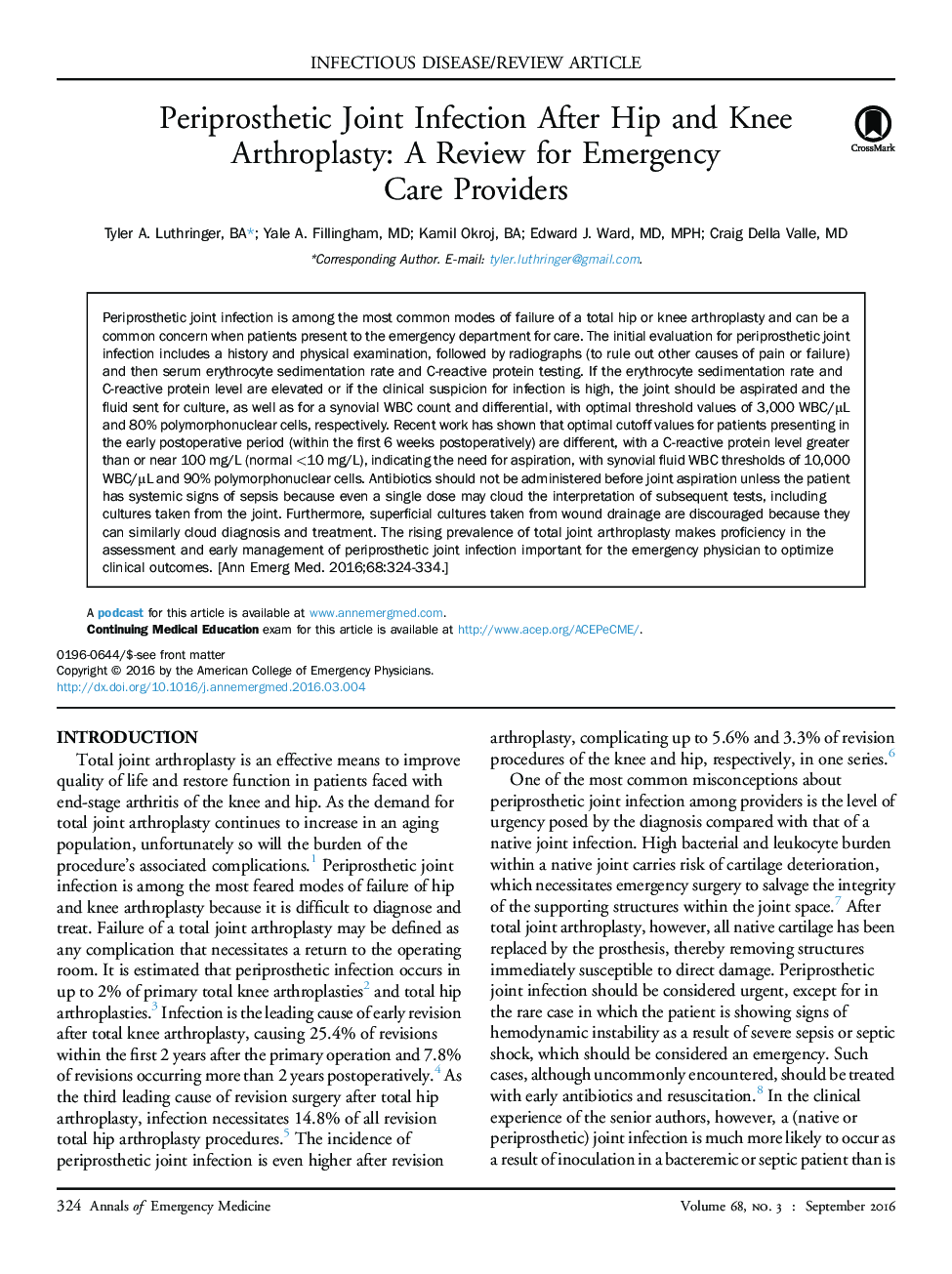| Article ID | Journal | Published Year | Pages | File Type |
|---|---|---|---|---|
| 3228189 | Annals of Emergency Medicine | 2016 | 11 Pages |
Periprosthetic joint infection is among the most common modes of failure of a total hip or knee arthroplasty and can be a common concern when patients present to the emergency department for care. The initial evaluation for periprosthetic joint infection includes a history and physical examination, followed by radiographs (to rule out other causes of pain or failure) and then serum erythrocyte sedimentation rate and C-reactive protein testing. If the erythrocyte sedimentation rate and C-reactive protein level are elevated or if the clinical suspicion for infection is high, the joint should be aspirated and the fluid sent for culture, as well as for a synovial WBC count and differential, with optimal threshold values of 3,000 WBC/μL and 80% polymorphonuclear cells, respectively. Recent work has shown that optimal cutoff values for patients presenting in the early postoperative period (within the first 6 weeks postoperatively) are different, with a C-reactive protein level greater than or near 100 mg/L (normal <10 mg/L), indicating the need for aspiration, with synovial fluid WBC thresholds of 10,000 WBC/μL and 90% polymorphonuclear cells. Antibiotics should not be administered before joint aspiration unless the patient has systemic signs of sepsis because even a single dose may cloud the interpretation of subsequent tests, including cultures taken from the joint. Furthermore, superficial cultures taken from wound drainage are discouraged because they can similarly cloud diagnosis and treatment. The rising prevalence of total joint arthroplasty makes proficiency in the assessment and early management of periprosthetic joint infection important for the emergency physician to optimize clinical outcomes.
